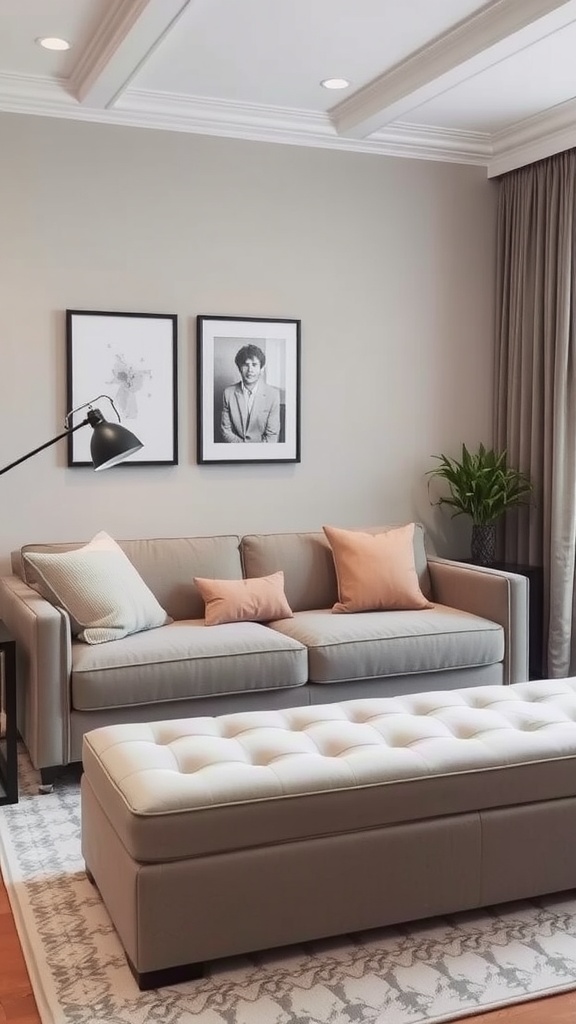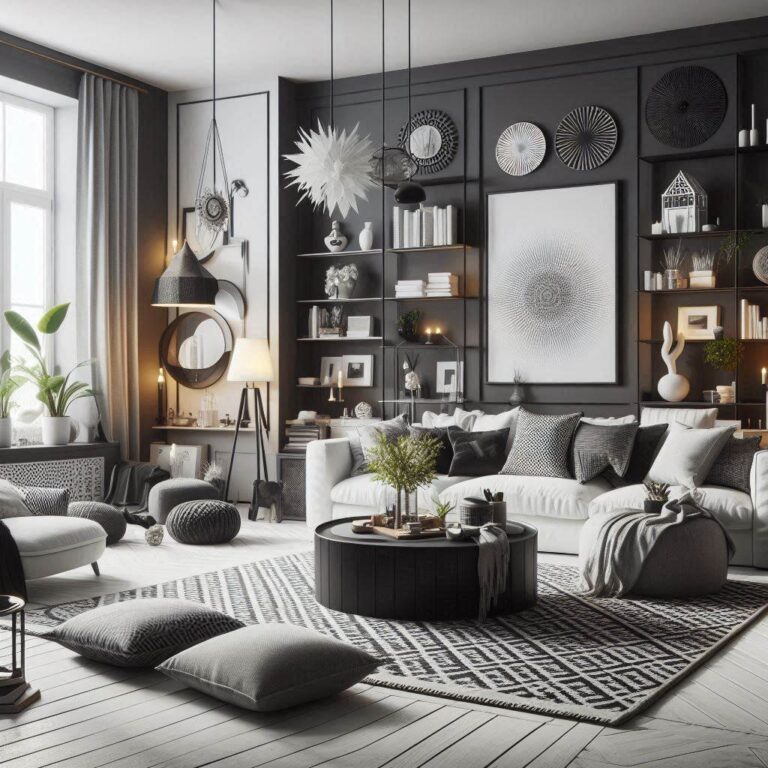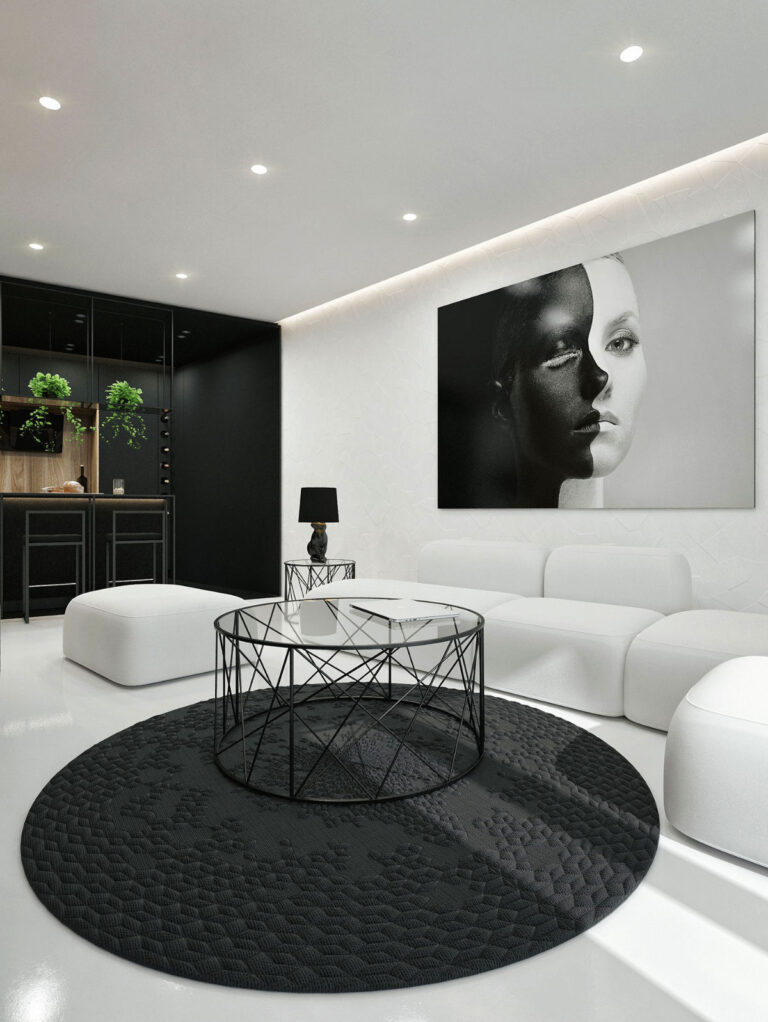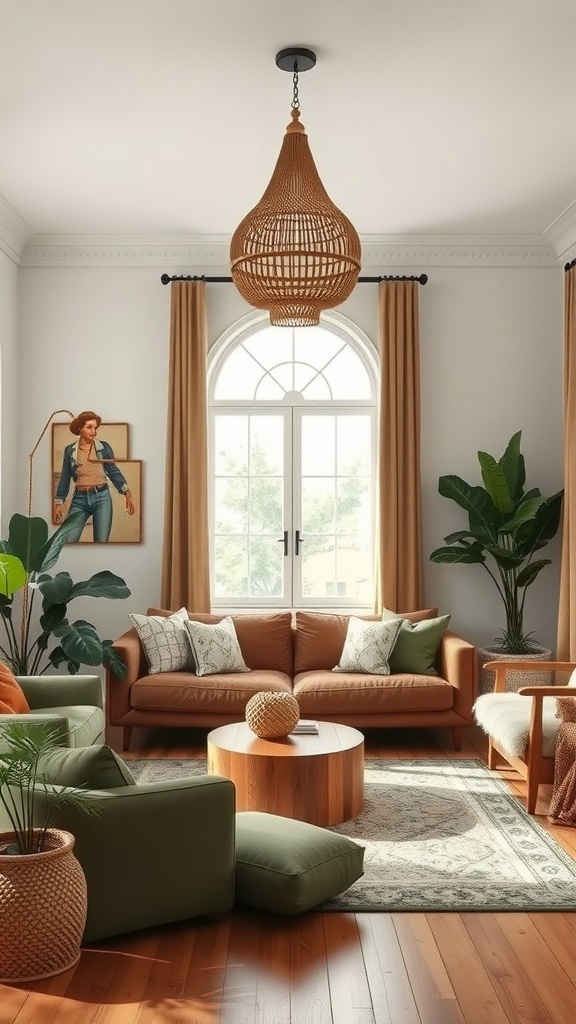19 Gothic Living Room Ideas for a Bold and Enchanting Home
If your soul leans toward the mysterious and romantic, then a gothic living room might be exactly what your home needs. Rich colors, intricate details, and a dramatic flair come together to create a space that’s equal parts cozy and captivating.
Whether you’re into vintage Victorian vibes or prefer a sleek modern twist on gothic aesthetics, this list of 19 gothic living room ideas will help you transform your space into a dark and dreamy retreat.
Let’s explore ten inspiring ways to bring gothic elegance into your living room.
1. Moody Color Palette
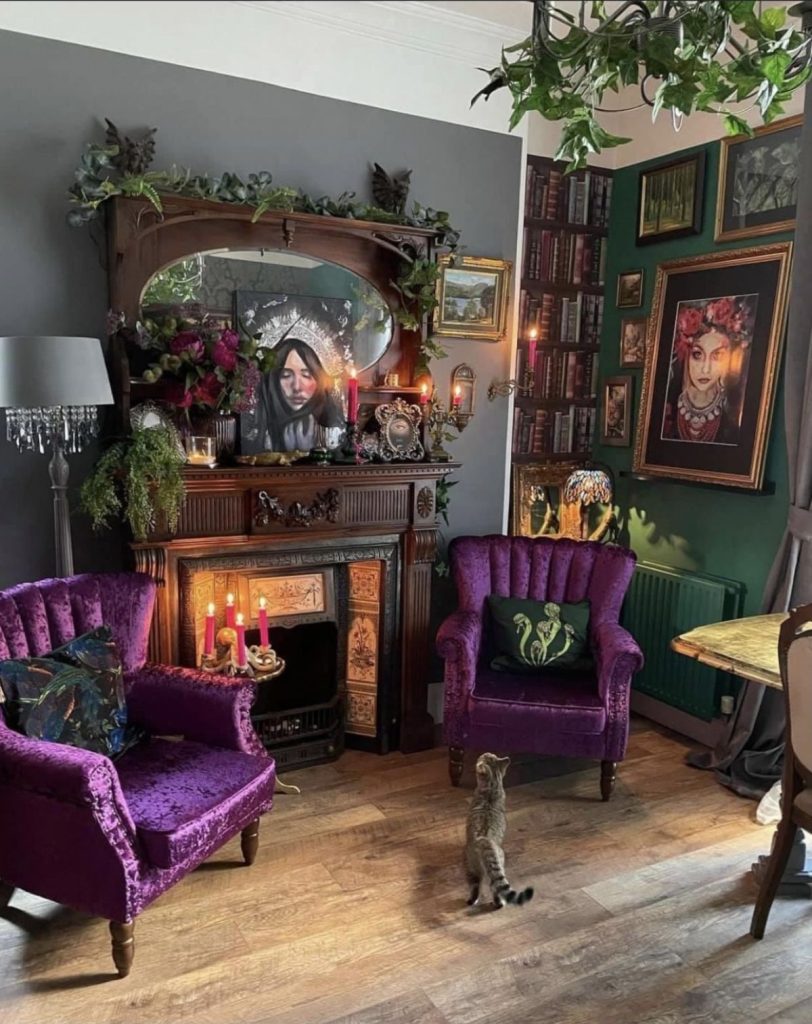
One of the first and most essential steps to creating a gothic living room is choosing the right color scheme. Think deep, rich hues like midnight black, charcoal gray, burgundy, forest green, and plum. These tones instantly infuse your space with drama and sophistication.
Dark walls can create a cozy, cave-like atmosphere that enhances the gothic aesthetic. Consider matte or velvet-textured paints for added depth. If painting an entire room feels overwhelming, opt for a feature wall in a bold, moody color and pair it with more neutral tones.
Layer your dark walls with matching furniture and textiles. A black velvet sofa or burgundy tufted armchair fits right in. Accentuate with gold-framed mirrors, dark wood furniture, and shadowy drapes to complete the ambiance.
For balance, incorporate some softer lighting—like flickering candlelight or a chandelier—to keep the room from feeling too heavy. Gothic doesn’t have to mean gloomy; it’s all about atmosphere and elegance.
2. Vintage-Inspired Furniture

Gothic interiors shine when filled with furniture that has history and character. Vintage-inspired pieces, particularly those with carved wood detailing and antique finishes, set the tone beautifully.
Look for Victorian-style chairs with high backs, claw-foot coffee tables, and distressed sideboards in dark wood tones. These elements not only nod to the romanticism of the gothic era but also bring a sense of luxury to your living room.
Incorporate a mix of textures—velvet upholstery, leather accents, and aged metals all contribute to that lived-in, mysterious vibe. Don’t be afraid to browse antique stores or estate sales for one-of-a-kind treasures. Each piece should feel intentional, curated, and full of soul.
Modern gothic styles also work well with eclectic touches, so blend older pieces with newer finds that match the mood. The goal is a room that feels timeless, a little bit moody, and effortlessly stylish.
3. Dramatic Drapery
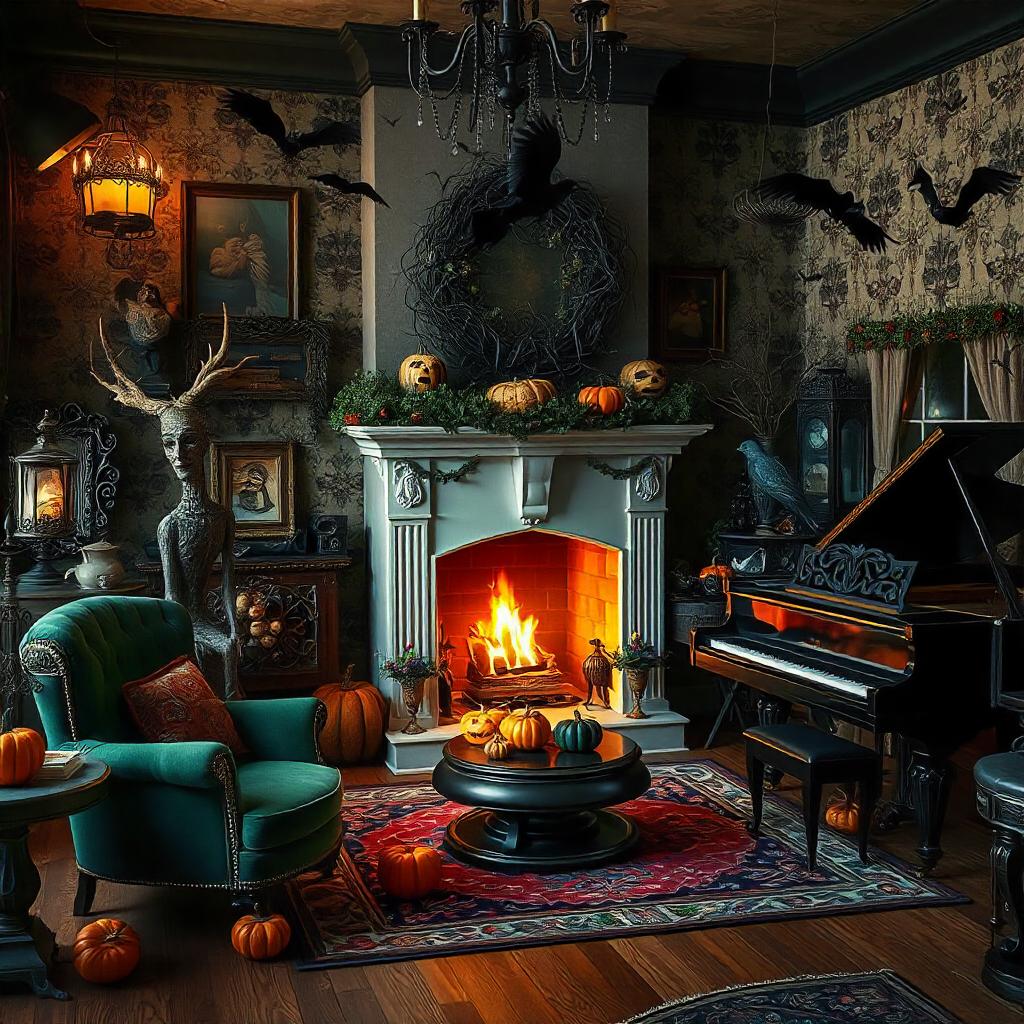
Nothing transforms a space quite like curtains, and in a gothic living room, the right drapery can make all the difference. Heavy, floor-length drapes in velvet or brocade fabrics instantly add drama and depth.
Choose deep colors—black, deep red, or eggplant purple—for that rich, moody effect. Tassels, fringe, and ornate tiebacks contribute even more old-world flair. These details bring a soft texture that balances out dark woods and metal elements elsewhere in the room.
Layering is key. Consider using sheer lace curtains beneath heavier drapes to allow a bit of light to filter in while maintaining privacy and mystery. When open, they should pool elegantly on the floor, adding to the luxe feel of the room.
Drapes also help soften acoustics, making the space feel cozier and more intimate—a must for any gothic retreat. Your windows are more than just openings; with the right treatment, they become focal points of your decor.
4. Gothic Gallery Wall
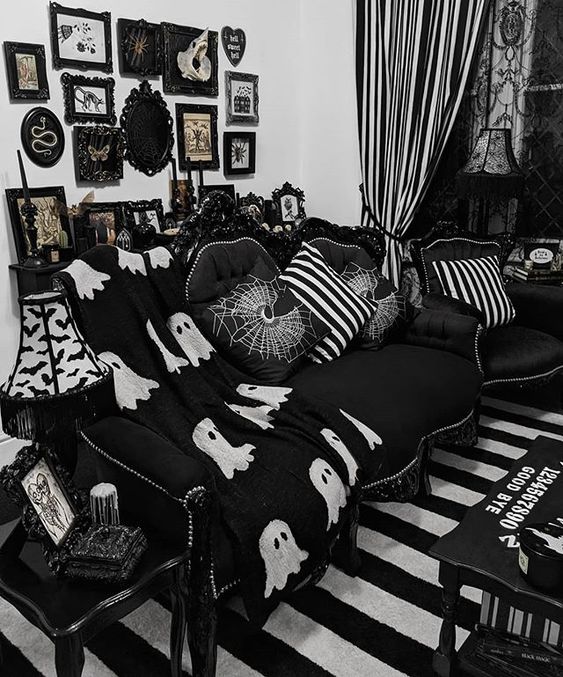
A gallery wall is a great way to personalize your gothic living room, especially when filled with moody art, antique portraits, and ornate frames. This setup can be as curated or eclectic as you like—what matters most is the atmosphere it creates.
Start with a bold background wall in a rich hue or textured wallpaper. Then build your collection with vintage-style frames in black, gold, or bronze. Inside, display Victorian prints, gothic sketches, or even macabre-themed artwork like ravens, skulls, and celestial motifs.
To keep things balanced, mix in mirrors or candle sconces for variety. Gothic design thrives on asymmetry and intrigue, so don’t feel like everything has to be perfectly aligned.
A gallery wall offers an opportunity to tell your unique story—whether you’re a literature lover, a romantic, or a fan of all things mysterious. This is where your gothic living room truly becomes your own.
5. Ornate Lighting Fixtures
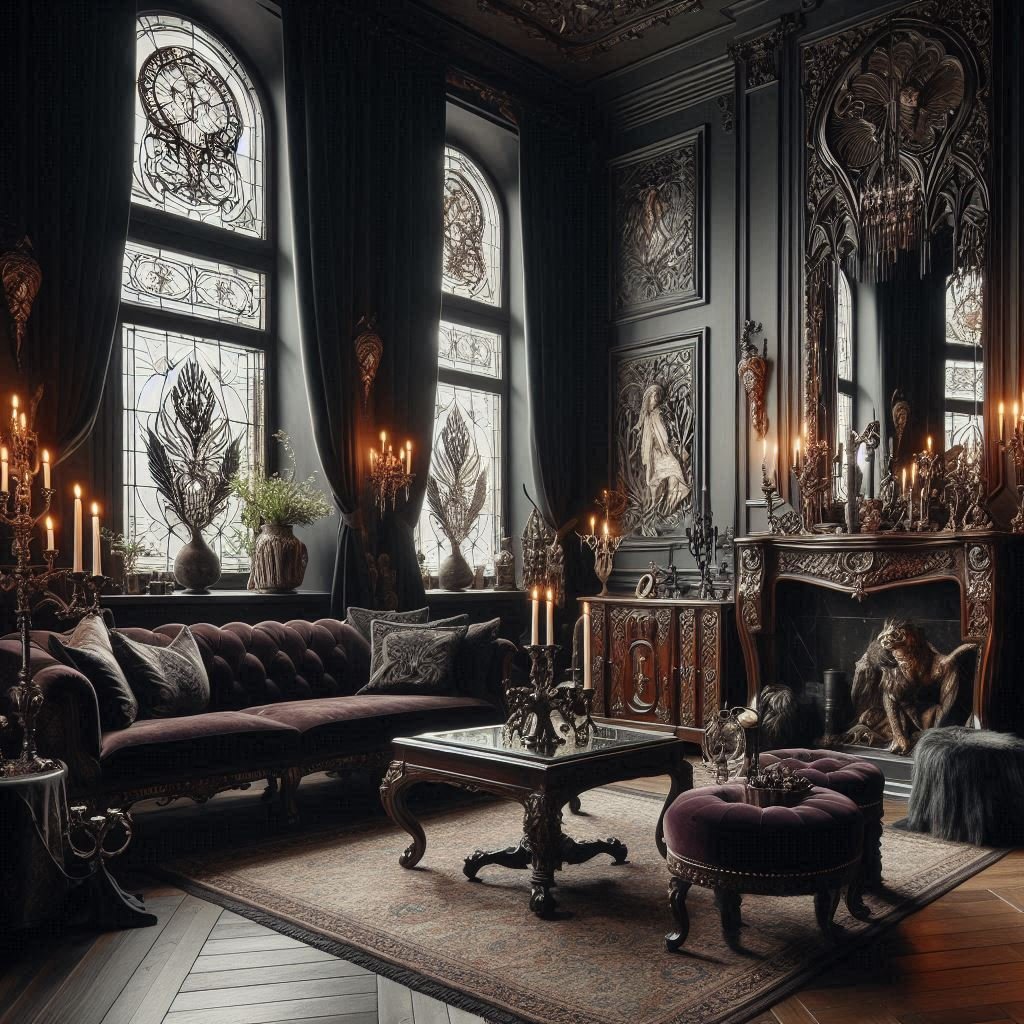
Lighting plays a central role in creating a gothic atmosphere. Swap out generic ceiling fixtures for ornate chandeliers, wrought-iron sconces, or vintage-style lamps that cast warm, ambient light.
A black crystal chandelier can serve as a stunning centerpiece, dripping with elegance and mystery. For a more medieval feel, go for candle-style wall sconces or iron candelabras that recall old castles and cathedrals.
Layer your lighting with table lamps in carved bases and dark shades. These will provide soft, romantic lighting that enhances your space without overpowering it.
Don’t forget about candles! Flameless or real, they provide the flickering, moody ambiance that defines gothic decor. When strategically placed, lighting becomes more than functional—it becomes a mood-setting design feature.
6. Dark Botanical Elements
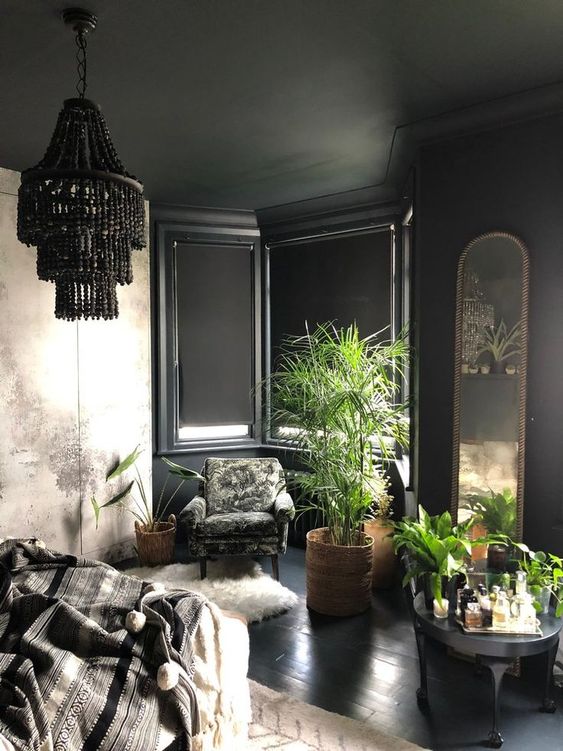
Even gothic spaces benefit from a touch of nature. Bring life into your living room with dark botanical elements that complement the overall theme.
Think black roses, dried eucalyptus, or dark green ivy draped over shelves or windows. Potted plants like rubber trees or burgundy-hued oxalis add color and contrast without clashing with your gothic palette.
Dried flower arrangements in vintage vases or domed cloches bring a Victorian flair while keeping maintenance low. Add a touch of the eerie with twisted branches or preserved moss in shadow boxes.
Botanical touches keep your gothic living room feeling fresh and connected to nature—just with a darker twist. These details also break up heavy textures and give the eye a natural place to rest.
7. Textured Accent Walls
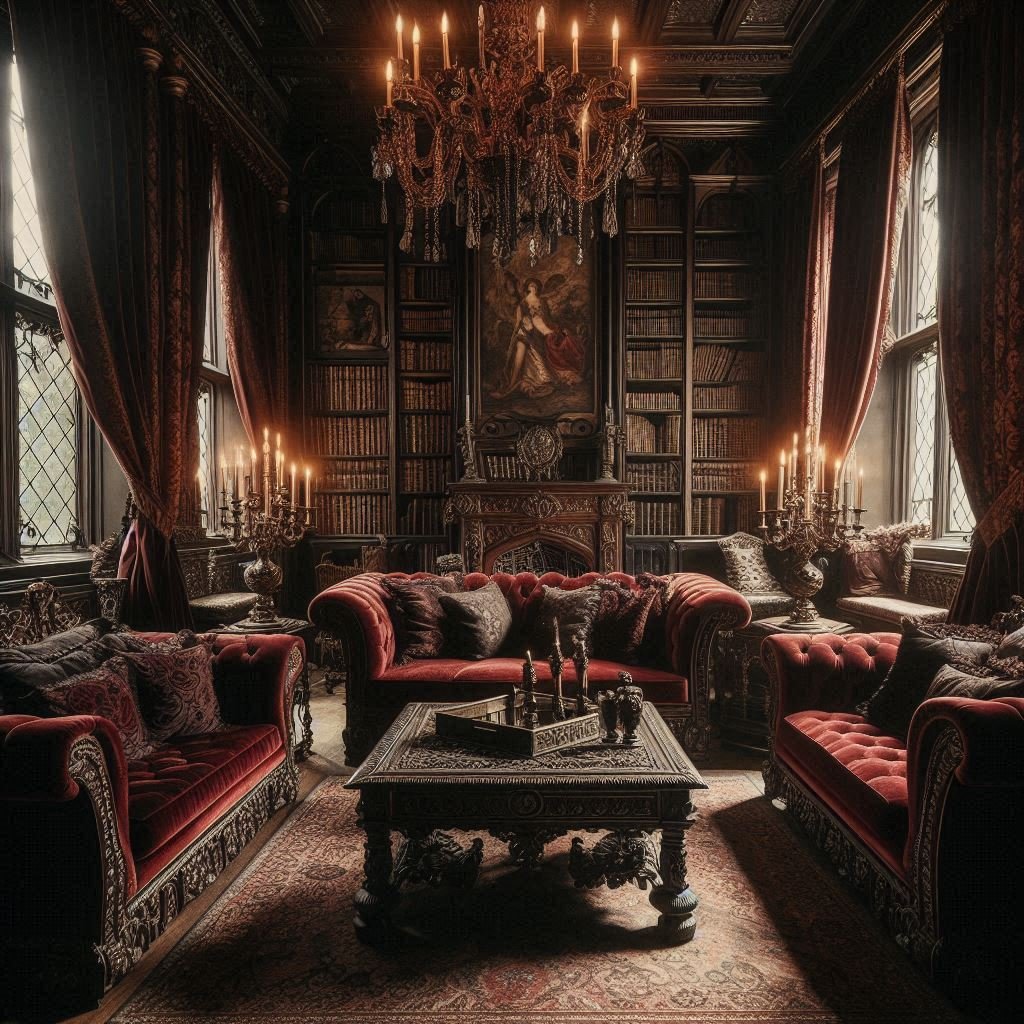
A bold accent wall can anchor your gothic living room and tie the entire space together. Textured options like faux brick, embossed wallpaper, or dark wood paneling create depth and intrigue.
Choose a wall that draws natural attention—behind your sofa or fireplace—and transform it into a dramatic focal point. Embossed damask wallpaper in a deep charcoal or black velvet finish adds a luxurious touch, while exposed brick lends an aged, historical feel.
Consider painting wooden molding in a contrasting dark hue or using decorative wall panels for a more architectural vibe. These kinds of layers give the room a timeless, high-end appearance.
The texture doesn’t just come from the material itself; lighting plays a big role too. Use spotlights or wall sconces to highlight your accent wall’s unique details.
8. Gothic-Inspired Fireplace
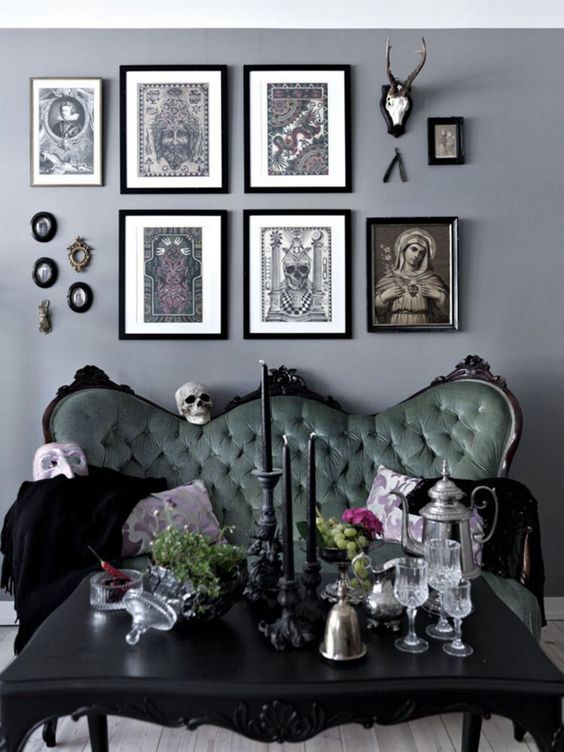
A fireplace is a natural fit for a gothic living room. Whether it’s functional or purely decorative, a fireplace acts as a central anchor and brings cozy, old-world charm to your space.
If you have a working fireplace, consider framing it with an ornate mantel in dark-stained wood or black stone. Adorn it with vintage candelabras, a gilded mirror, or an antique clock. Faux fireplaces also work beautifully when styled correctly—just add stacked logs or flickering LED candles for effect.
Above the mantel, hang a gothic-style painting or an intricate mirror with wrought iron details. Keep the hearth area in line with the rest of the decor—dark tiles, aged brass tools, and rich textures complete the look.
This cozy focal point not only enhances the room’s ambiance but also gives you a space to gather, relax, and reflect in true gothic style.
9. Antique Mirrors
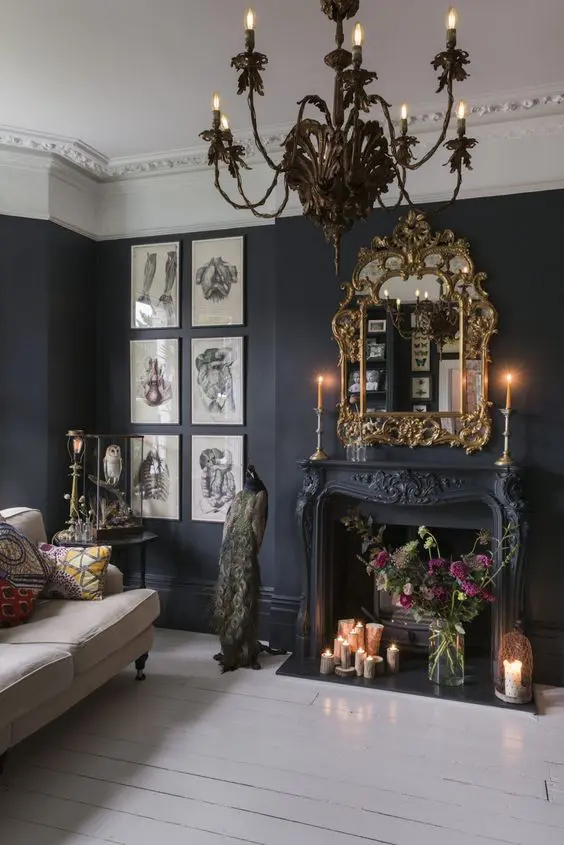
Mirrors are a powerful design tool in any gothic space. They reflect light, add depth, and serve as stunning decorative pieces—especially when framed in elaborate styles.
Look for mirrors with gilded gold, black baroque, or distressed silver frames. Hang a large mirror above the fireplace or as part of a gallery wall. The goal is to choose designs that feel dramatic, elegant, and slightly mysterious.
Mirrored furniture or accent trays can also enhance the gothic vibe while adding a bit of glam. Place candles or lanterns nearby to reflect a soft glow, turning your mirrors into portals of atmosphere.
Whether vintage or reproduction, the right mirror can evoke feelings of old castles and gothic tales, adding another layer of richness to your living room design.
10. Velvet Everything
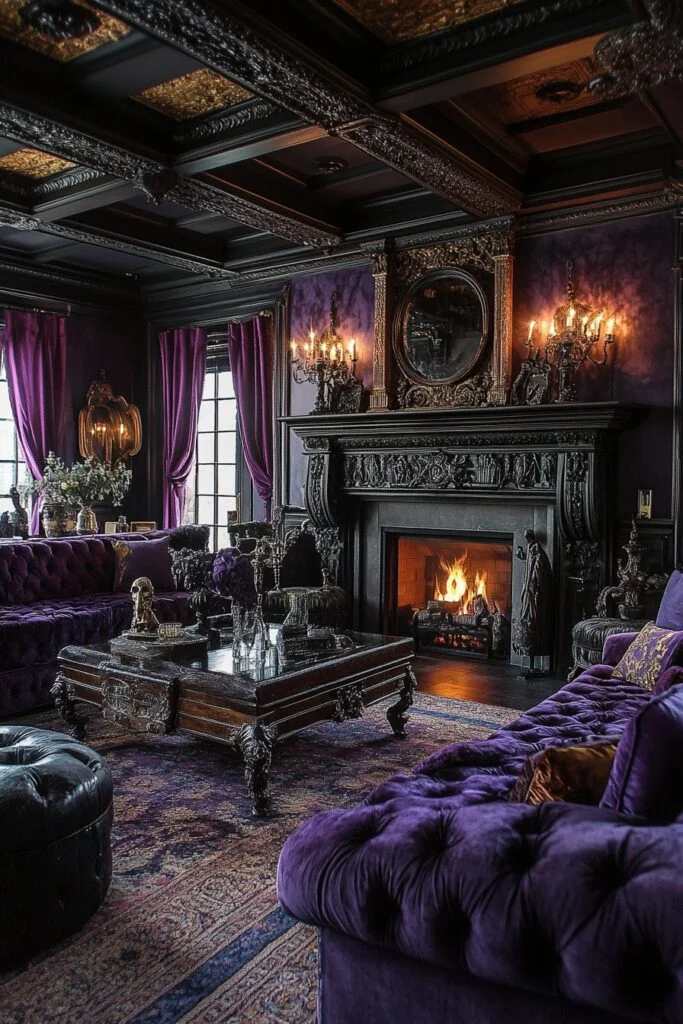
Velvet is practically synonymous with gothic interiors. Luxurious, tactile, and timeless, it’s the perfect fabric to incorporate throughout your living room for that signature gothic opulence.
Start with a velvet sofa in deep emerald, burgundy, or black. Add matching or contrasting velvet throw pillows and drapes for cohesion. A velvet ottoman or armchair can act as both a statement piece and a cozy reading spot.
Mix velvet with other rich textures like lace, leather, and brocade to create visual interest. Use crushed velvet for a more lived-in feel or sleek velvet for a cleaner, modern gothic aesthetic.
Not only does velvet feel amazing, but it also absorbs light in a way that makes colors appear deeper and more dramatic. It’s the ultimate fabric for creating a moody, elegant space where every detail feels intentional and indulgent.
11. Statement Gothic Rugs
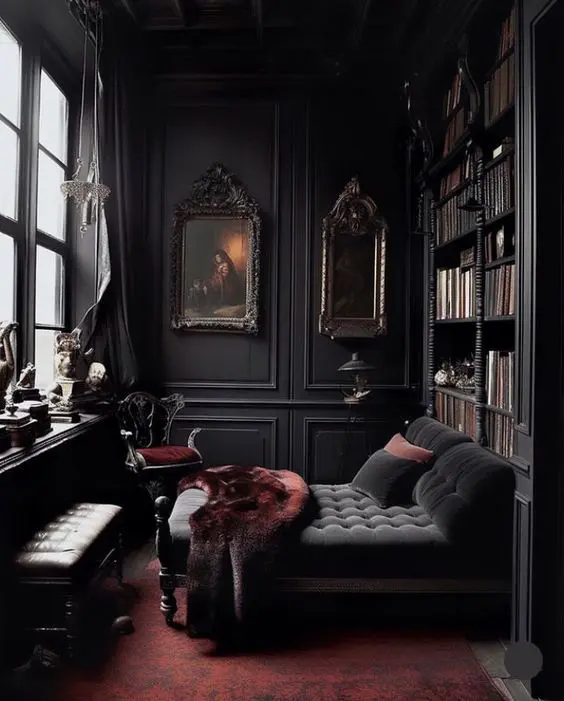
Rugs play a powerful role in setting the tone of any room, and in a gothic living room, they help anchor the space while reinforcing the moody aesthetic.
Look for rugs with intricate baroque or damask patterns in rich tones like black, burgundy, dark navy, or forest green. Oriental and Persian-style rugs also work beautifully, especially those with a vintage or distressed finish. These classic patterns evoke an old-world feel that’s perfect for gothic decor.
Layering rugs is another way to create depth and drama. A larger neutral rug beneath a richly patterned one adds dimension and makes your seating area feel intimate. Pair your rugs with heavy, dark wood coffee tables or wrought iron accent pieces to enhance the look.
The right rug not only adds visual warmth and texture but also absorbs sound, creating that hushed, almost cathedral-like vibe that’s so essential to gothic style.
12. Gothic Literature Touches
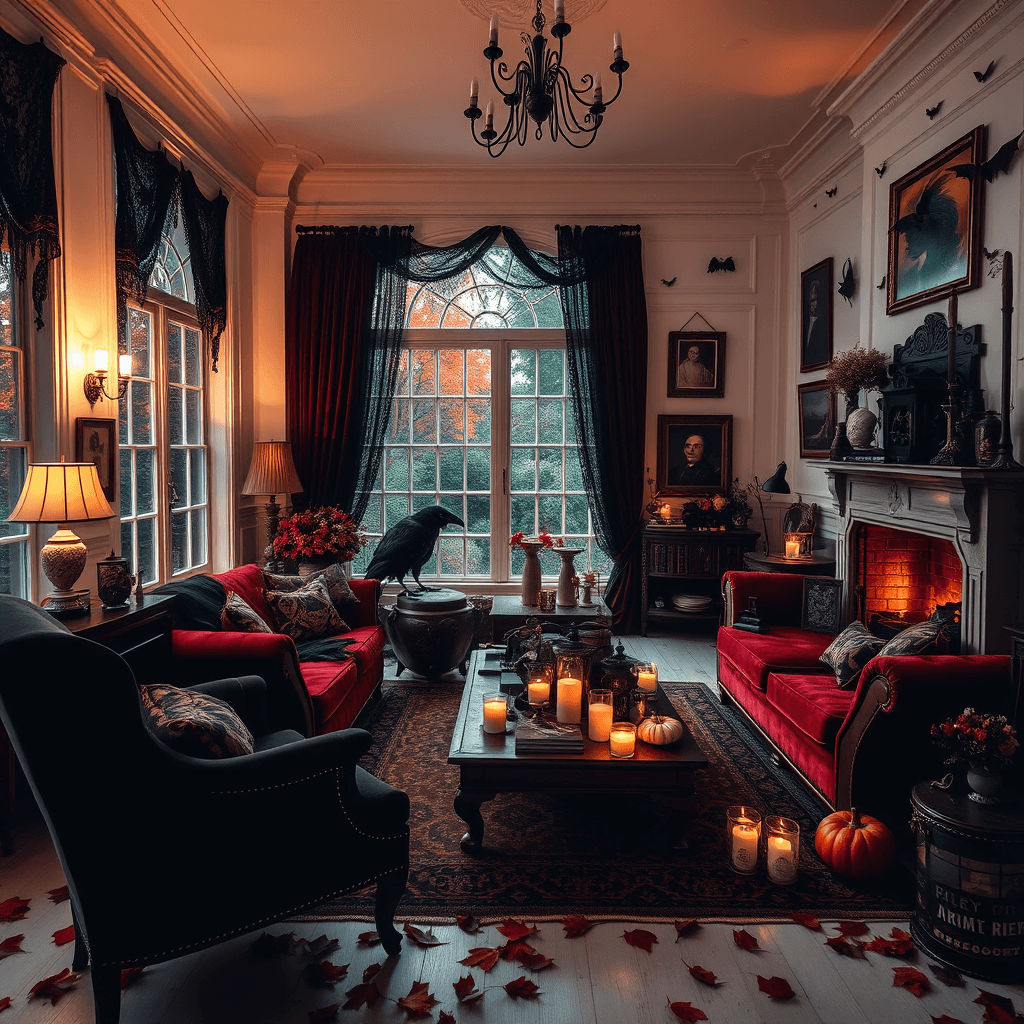
Infuse your living room with the essence of gothic literature by incorporating subtle nods to classic novels and dark storytelling. This could be as simple as displaying antique books or as elaborate as creating a themed reading nook.
Stack weathered, leather-bound novels on side tables or in dark wooden bookshelves. Include works from Edgar Allan Poe, Mary Shelley, Bram Stoker, or the Brontë sisters. Vintage-style bookends—think ravens, skulls, or gargoyles—can add even more personality.
You can also frame quotes from your favorite gothic stories or hang prints inspired by classic book covers. A cozy armchair beside a flickering candle or a moody lamp creates the perfect spot to lose yourself in a tale of mystery and romance.
These subtle details make the space feel thoughtful, cultivated, and uniquely yours—perfect for literature lovers and dark romantics alike.
13. Wrought Iron Accents
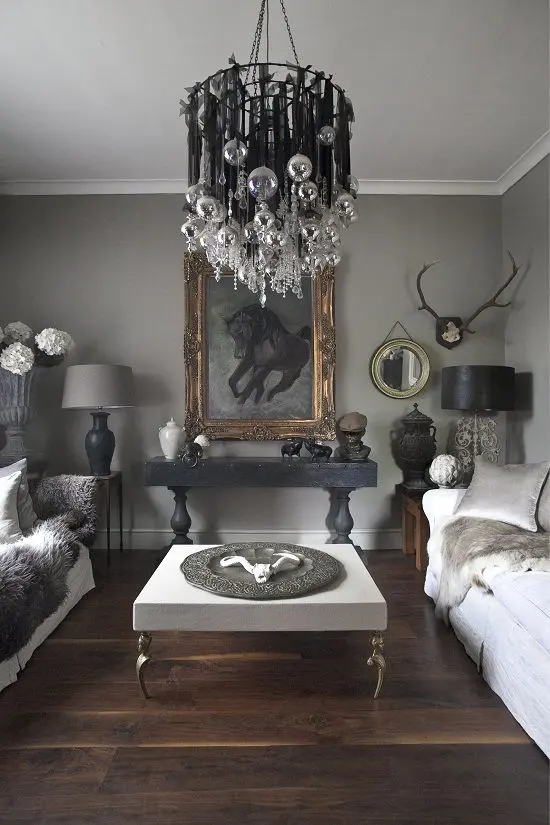
Wrought iron is a hallmark of gothic design, thanks to its old-world craftsmanship and dramatic lines. It’s both functional and decorative, making it a fantastic way to layer gothic flair throughout your space.
Incorporate wrought iron through curtain rods, picture frames, wall sconces, or furniture details like coffee table legs or side chairs. The black metal pairs beautifully with both dark and rich tones, offering a strong visual contrast and adding depth to your decor.
Wrought iron shelving or mirror frames can serve as bold focal points, while small accents—such as candleholders or fireplace tools—add subtle touches that tie everything together.
This material evokes a medieval, cathedral-like ambiance that perfectly complements velvet, dark woods, and moody colors. With the right pieces, wrought iron brings timeless structure and texture to your gothic living room.
14. Gothic Wall Molding
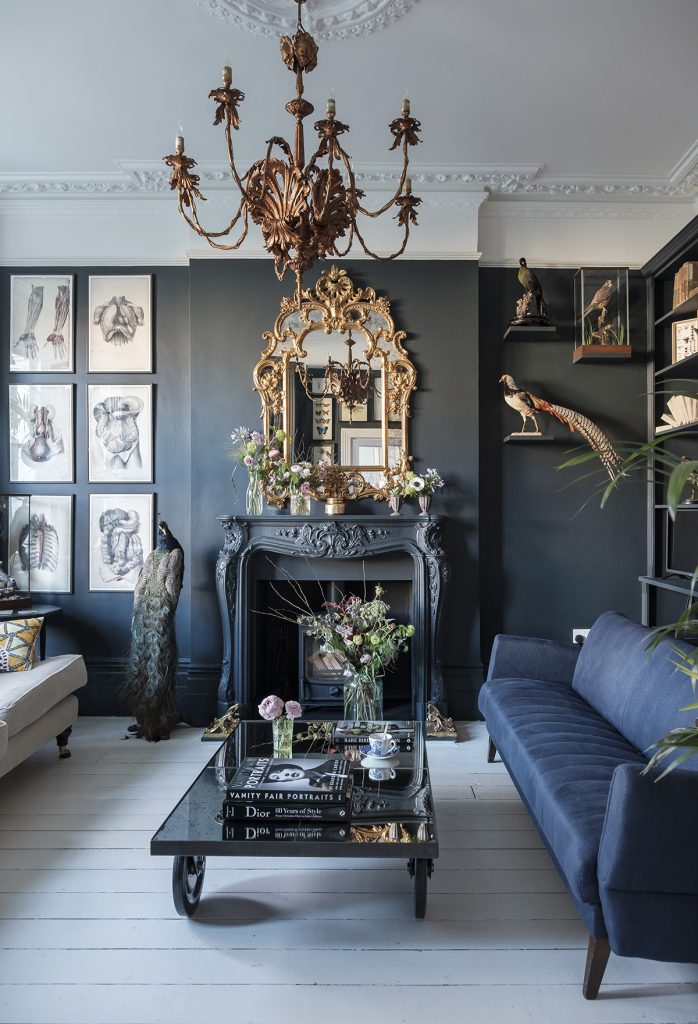
Crown molding and decorative wall trim are often overlooked, but in a gothic living room, they can dramatically enhance the architecture and overall mood of the space.
Use dark-painted wainscoting or picture-frame molding to add structure and sophistication to your walls. Consider painting your trim in the same dark color as the wall for a seamless, enveloping effect—or use a slightly different hue to add depth.
For a bolder look, go for arched wall paneling or custom millwork that mimics the shapes found in gothic cathedrals. These details can transform even a modern space into something more historical and theatrical.
You don’t have to live in a castle to enjoy gothic wall features. Even simple crown molding painted black or charcoal can make your living room feel more stately and immersive.
15. Candlelit Atmosphere
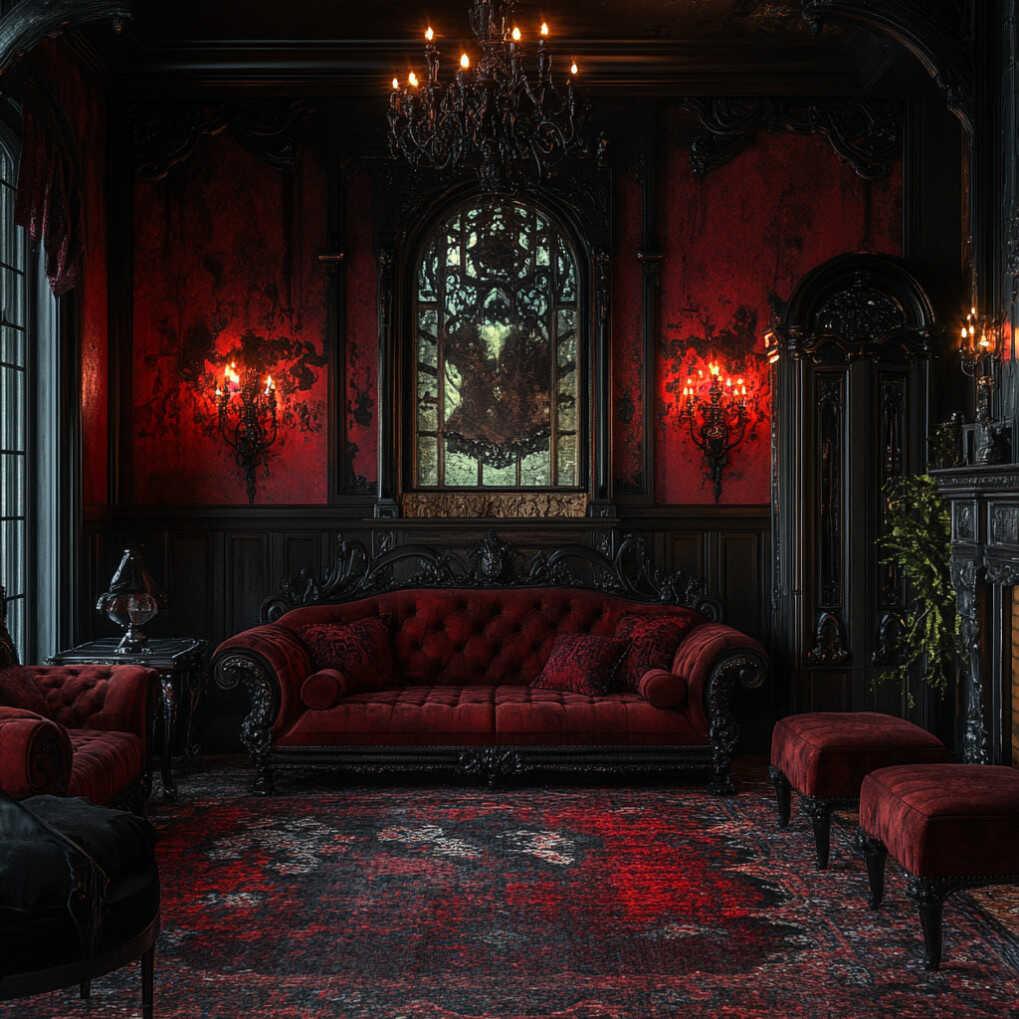
Candles are essential in any gothic space. They create flickering, romantic lighting and a cozy, mysterious ambiance that no electric light can match.
Scatter candlesticks, candelabras, and lanterns throughout your living room. Choose antique-style holders in brass, wrought iron, or crystal to enhance the mood. Use flameless LED candles for safety or real taper candles if you want the full experience.
Consider clustering candles on the fireplace mantel, coffee table, or windowsill. You can even hang wall-mounted candle sconces for a more dramatic look.
Candlelight brings warmth to your gothic living room, softening dark colors and highlighting rich textures. It creates the perfect atmosphere for a quiet evening with a book or an intimate gathering with friends.
16. Dark Ceiling Paint
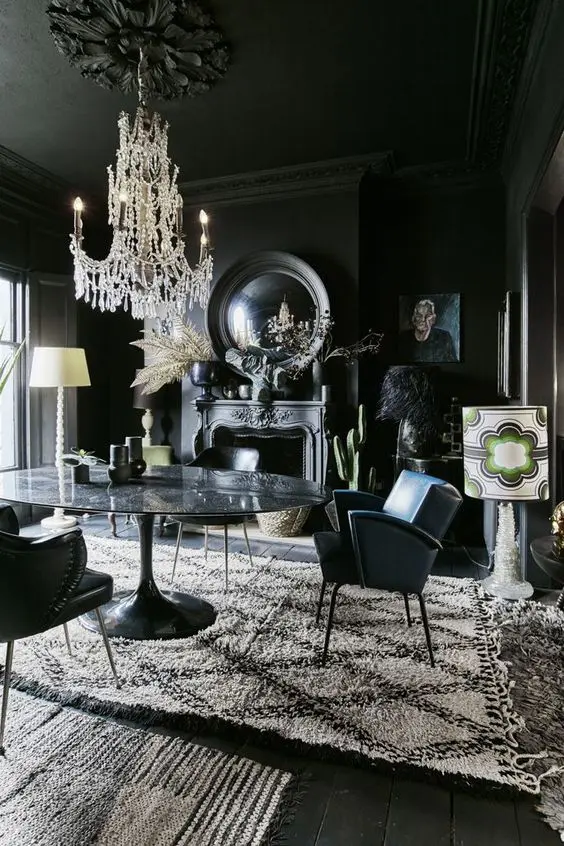
Painting your ceiling a dark color might seem daring, but it’s one of the most powerful ways to create an immersive gothic atmosphere.
Opt for shades like deep plum, charcoal, or midnight blue. A matte or satin finish works best for ceilings, absorbing just enough light to create that enveloping, cathedral-like feel without making the room seem smaller.
Pair your dark ceiling with ornate crown molding or a statement chandelier for added impact. It becomes more than just a ceiling—it turns into a bold design feature that commands attention.
Dark ceilings draw the eye upward, making the room feel taller and more dramatic. When done right, it feels luxurious, cozy, and unapologetically gothic.
17. Victorian and Baroque Art
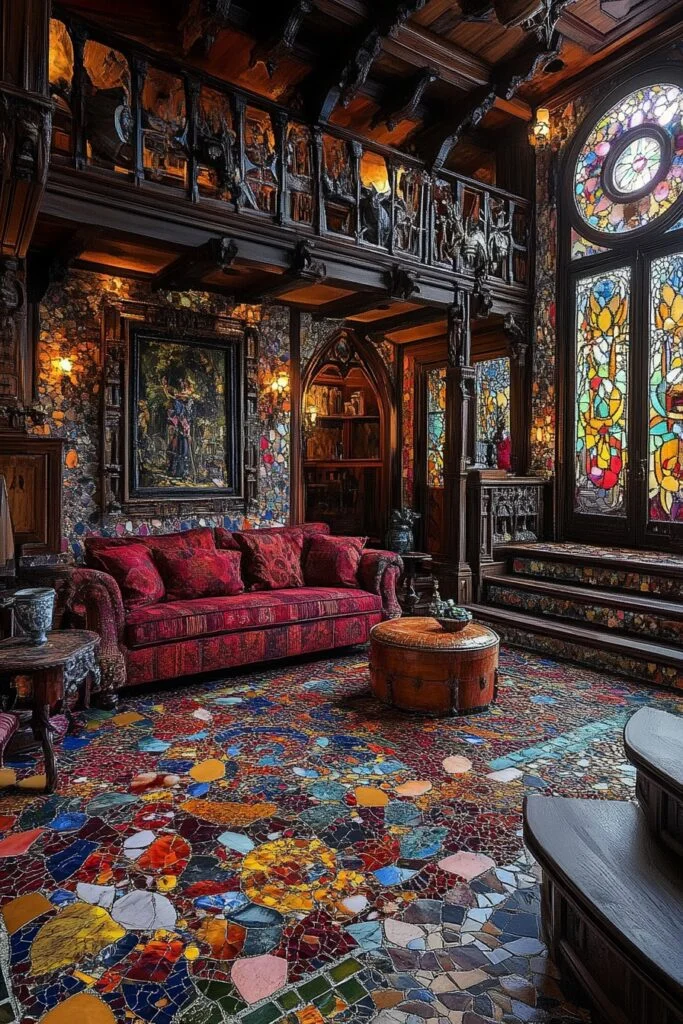
Artwork is a fantastic way to solidify your gothic living room’s theme. Victorian and Baroque-style pieces fit the aesthetic perfectly, bringing both drama and elegance to your walls.
Look for oil paintings, dark floral prints, and moody portraits in ornate frames. Reproductions of classic art or vintage finds from antique markets can add authenticity. Even surreal or mystical artwork with a gothic twist—like celestial bodies, mythological creatures, or anatomical sketches—can work beautifully.
Hang one large piece above your sofa or fireplace, or create a themed art wall with several smaller works. Use heavy gilded frames or matte black ones to emphasize the gothic theme.
Art is personal, and in a gothic space, it should reflect your love for the romantic, the mysterious, and the sublime.
18. Skull and Raven Accents
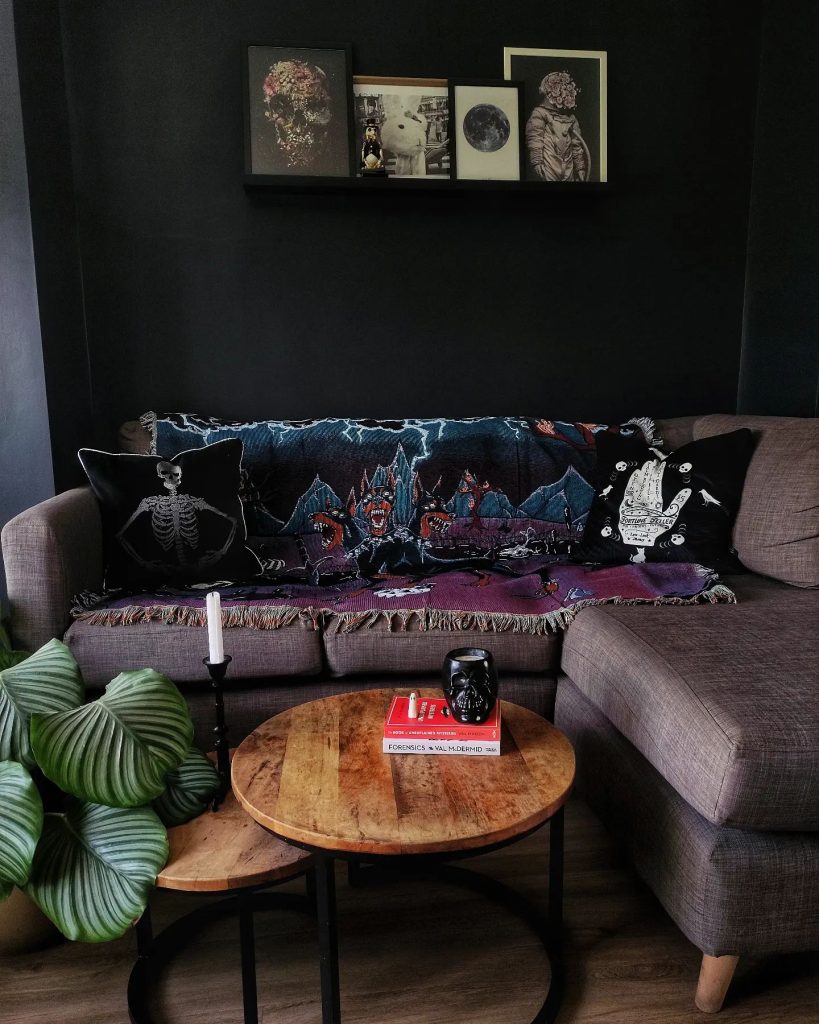
Add a hint of the macabre with subtle skull and raven-themed accents. These motifs are classic symbols in gothic decor and literature, offering just the right balance of dark charm and intrigue.
Look for decorative skulls made of ceramic, crystal, or aged metal. Ravens—whether in print, sculpture, or embroidered on textiles—add a literary and supernatural touch to your room. Incorporate these accents sparingly to keep the space stylish rather than kitschy.
A glass cloche housing a small raven figurine, or a vintage-style skull on a side table, adds a curated and thoughtful edge. These details nod to gothic culture without overwhelming the space.
It’s all about creating visual storytelling—where each object whispers a tale of mystery and elegance.
19. Luxurious Throw Blankets and Pillows
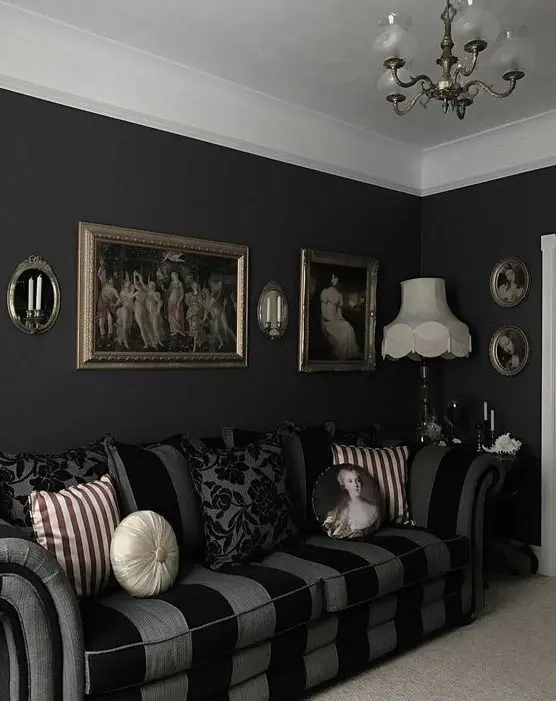
Finish your gothic living room with luxurious layers of textiles. Throw blankets and pillows not only add comfort but also enhance the room’s richness and visual interest.
Choose fabrics like velvet, faux fur, brocade, or lace. Deep jewel tones, black, and dark neutrals are ideal. Opt for tassels, fringe, or embroidered detailing to bring in vintage elegance.
Drape a plush throw over your sofa or reading chair. Layer pillows in mixed textures and sizes to give your seating a plush, inviting look.
These cozy elements soften the strong lines and dark colors of gothic furniture, creating a harmonious blend of drama and comfort. It’s the final step in making your gothic living room feel like a true sanctuary.
Conclusion: Create a Living Room That Tells a Story
A gothic living room isn’t just about dark colors or vintage furniture—it’s about creating a space that tells a story. One filled with emotion, romance, mystery, and timeless charm.
Whether you’re starting from scratch or slowly transforming your space, these 19 gothic living room ideas offer plenty of inspiration. From bold paint choices and ornate lighting to antique mirrors and brooding artwork, each element plays a role in crafting an atmosphere that’s uniquely yours.
You don’t need a castle to enjoy gothic elegance—just a love for drama, detail, and design that speaks to the soul.
So go ahead, light the candles, draw the velvet curtains, and let your living room embrace its beautifully dark side.

